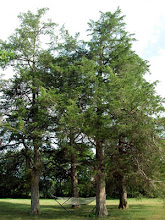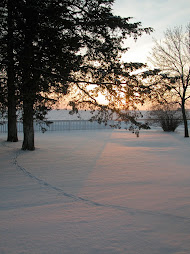I just finished reading “Emily of Deep Valley,” juvenile fiction written in 1950 by Maud Hart Lovelace. I have written about Hart Lovelace here before; she was a native of Mankato and based most of her juvenile fiction on experiences she had in the small but picturesque town that is but a short carriage ride from here.
I didn’t grow up a fan of Hart Lovelace books. To be honest, before moving here, I’d never heard of her. (My summer reading lists were filled with Agatha Christie mysteries, all of them on short loan from the St. Paul Public Library.) As I build my network in and around Deep Valley, I’ve met lots of Hart Lovelace devotees who like me hadn’t found her Betsy Tacy series or her high school books when they were young. They did, however, discover the books after they had had daughters of their own. With her characters unwrapped in the midst of mother-child bonding, I can see how the author can command such a loyal following with clubs and
societies around the world charged with keeping her work available and her memory alive.
But what appeal can books written 60 years ago and set 100 years ago have for twenty-first century, text-messaging pre-teens who could just as easily flip on television for entertainment? How can Hart Lovelace remain as relevant in theme and plot in 2010 as she was during the Eisenhower administration? It was that question that led me to pick up and read “Emily of Deep Valley,” which is set in 1912 as Emily graduates from Deep Valley High. (Trust me dear ones, I don’t have many juvenile fiction titles in my home library and St. Paul Public is a long carriage ride from here.)
As it turns out, a girl in high school in 1912 suffered from the same sort of social challenges and self-doubt as girls in my grade had and, I suspect, as do girls in school today. “Do I fit in?” “Are my clothes fashionable?” “Am I smart enough?” “What am I supposed to do with my life?” And, of course, “does that boy I’m in love with even know I’m alive?” The more the world changes, the more the world stays … .
But Hart Lovelace goes deeper with her character in the book; she takes Emily face first into social issues of her time, social issues faced by the citizens of the real Deep Valley, and this is where Hart Lovelace snags me as a lifelong devotee even though I don’t have the advantage of sharing her work with an offspring.
Emily befriends a few children who belong to the town’s immigrant community: the Syrians. Her friendship leads to new introductions, discoveries and an education about a people with a rich culture; people, she learns, who have been largely shunned and marginalized by her community. Emily is able to find peace with herself when she turns her attention away from her worries about her looks and her future; her self image grows by leaps and bounds when she throws herself into helping others. That theme alone is a winner. It’s basically the call of Christianity.
But for me, the story goes deeper. I have ancestors who were known around another river town as “the Syrians.” And like the Syrians in Hart Lovelace’s book, my family was marginalized, called names by the “better” citizens of their town. Their immigration was not welcomed by those who felt the United States had enough people. They struggled with language and social structures and yet lived full lives in “shabby houses that needed paint.” I like to think that someone like Emily might have wandered into my ancestors’ neighborhood, into my ancestors’ lives, to extend to them some version of Emily’s small-town spirit of friendship. And why not? Hart Lovelace’s fiction is based on her early life experiences. Her stories are authentic. Her stories are timeless.
It is 2010 and the immigrants living on the fringe of our communities in shabby abodes hail from a different part of the world than Ottoman-controlled Syria. Yet, I’ll bet they hear people whisper derogatory names when they pass. I’ll bet some people feel they don’t belong here; the country is full enough. Still, I’d bet my carriage that despite the majority’s indifference to them, they are living out rich traditions and full lives in the shadow of the American dream like my ancestors once did. And I’ll bet somewhere in America there’s a teenager who, because of the example set by the fictional Emily Webster, is confident enough to step forward make a difference in their lives.
And so I’ve found the answer to my question. Maud Hart Lovelace remains relevant long after her death. We should all be so fortunate.






















